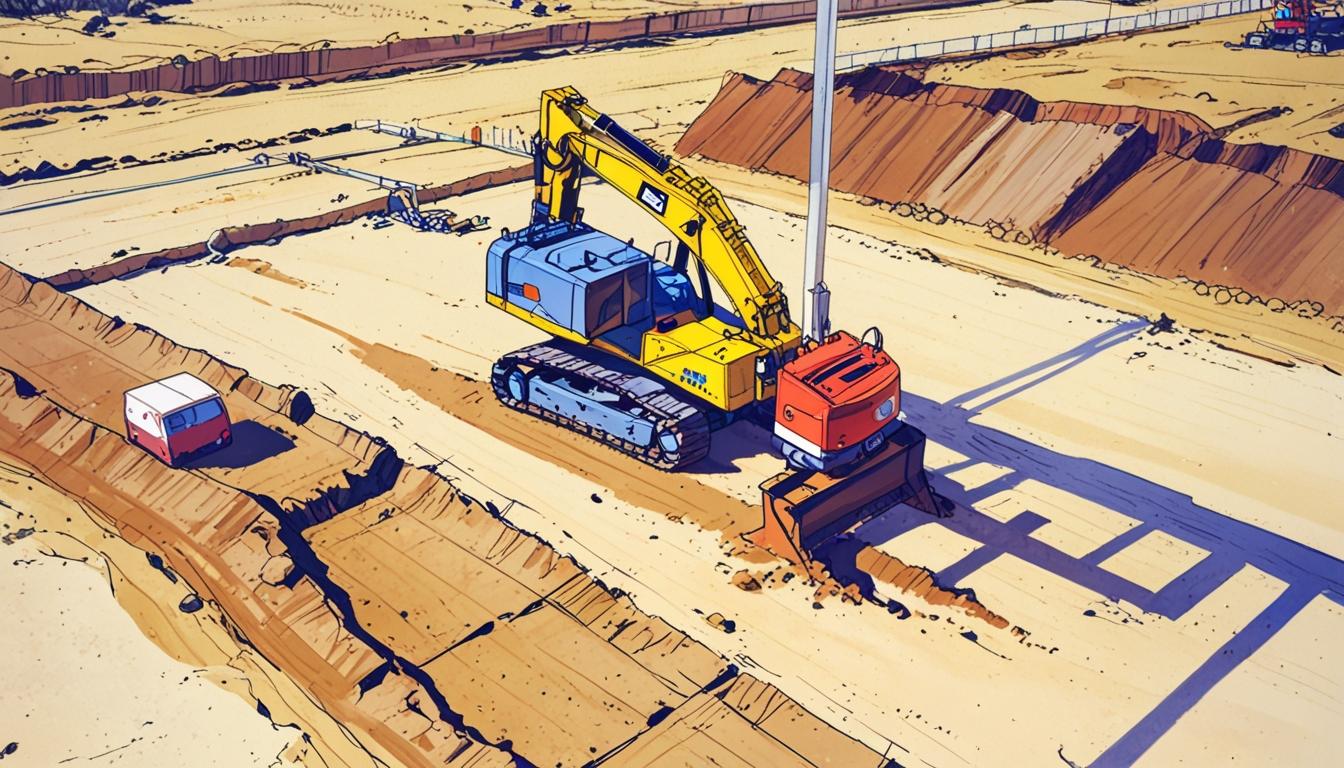ENGIE is trialling an Australian-first autonomous robotic piling system during the construction of its Goorambat East Solar Farm in Benalla, northern Victoria. The 250MW project is currently the largest solar farm under construction in Victoria, with ENGIE collaborating with its engineering, procurement, and construction contractor Bouygues Construction Australia.
The innovative piling system aims to accelerate the installation of piles, which serve as the foundations for solar panel setups. ENGIE highlights that this autonomous technology has the potential to operate continuously, around the clock. It is also presented as a solution for improving construction efficiencies in harsh or remote environments, including desert locations where human labour faces climatic challenges.
Leigh Newbery, ENGIE’s General Manager of Engineering and Asset Delivery, expressed optimism about the technology's future impact. Speaking to Utility Magazine, he said, “It requires skilled technicians to operate it, thus upskilling the current renewable energy workforce and enabling more productivity.” Mr Newbery added that higher productivity brought by the system could reduce renewable project costs and timelines, potentially lowering energy costs for consumers and facilitating a greater build-out of renewable projects. He also noted the benefits to worker safety and project timelines, particularly in remote or hostile environments.
Bastien Sauvet, Project Director at Bouygues Construction Australia, described the system’s technology as combining AI, GPS, and advanced sensors to guide the piling process with minimal human intervention. “This marks a major step in automating utility-scale solar construction, reducing costs, and accelerating timelines while maintaining high safety standards,” he said.
Mr Newbery highlighted that continued refinement of such autonomous technology could also reduce health and safety risks linked to manual handling on construction sites. Additionally, the robotic piling machine's advanced technology reduces noise output by up to 20%, potentially enabling night-time construction with limited disturbance to nearby residents.
Regarding the project's progress, Mr Newbery reported that piling work is expected to complete by the end of June 2025 and that solar panel installation began in the previous month with positive advancement. Approximately 240 workers are currently engaged on-site, with an additional 50 specialised staff focused on design, consultation, and management.
Mr Newbery also shared a personal connection to the region, having grown up near the project area in Burramine, close to Yarrawonga, northern Victoria. "Seeing these projects create long-term employment and sustainable infrastructure in rural areas is incredibly satisfying. It’s about giving people a reason to stay in or return to their communities,” he told Utility Magazine.
Once fully operational in 2026, the Goorambat East Solar Farm is anticipated to generate up to 250MW of power, enough to supply electricity to approximately 105,000 average Victorian homes.
ENGIE's approach integrates ownership and operation throughout the lifespan of its projects, leveraging international operational data to enhance future designs and construction methods. With a global engineering and research network based in Belgium, Paris, and other locations, ENGIE benchmarks performance across 30 countries. For example, they compare solar panel performance from the Goorambat East site with solar farms in Southern California and South Africa, enabling ongoing optimisation.
This trial of the autonomous robotic piling system at Goorambat East Solar Farm represents a significant technological advancement in Australian solar farm construction, combining efficiency, safety, and sustainability considerations within the broader renewable energy infrastructure development.
Source: Noah Wire Services
